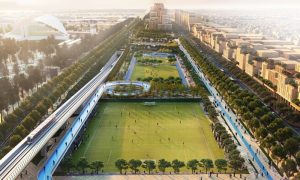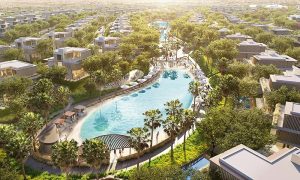Interview: James Lee, president, LG Electronics MEA
Exclusive: LG’s MEA strategy for local growth and how the HVAC sector has adapted to new requirements in the industry

In the Middle East and Africa (MEA), where temperature goes as high as 50°C, the key to smart energy management is in heating, ventilation, and air conditioning (HVAC) solutions. For instance, in Saudi Arabia, 70 per cent of energy consumption is used for cooling while the energy demand in Africa is expected to increase two fold by 2030. With this in mind, MECN speaks to James Lee, President of LG Electronics MEA, about the requirement of increasing investments in sustainable energy infrastructure in the MEA region.
What are your thoughts on the current market conditions in GCC, given that LG is involved in many sectors? What does the future of HVAC look like locally?
The GCC is rapidly evolving in terms of demand for sustainable HVAC solutions. We are seeing an increasing shift towards a more environmentally friendly mindset, not only in terms of HVAC solutions, but also across our wider business portfolio. GCC customers are also very keen to experience a highly connected and digital world, embracing more Internet of Things (IoT) technology, which is why we have started implementing more smart technology integration into our HVAC solutions to meet this demand.
Have you noticed any changes in clientele requirements over the last few years?
Customers are increasingly looking for energy efficient, cost effective and sustainable solutions, in line with local government agenda meanwhile, companies are increasingly investing in research and development. LG is particularly focused on ensuring its products have better energy ratings, resulting in lower emissions and utility bills.
What are some of the new requirements?
Customers are interested in choosing a provider based on the degree of after sales service support and maintenance offered, while smart technology is also an important feature people look for now – whether that is smart thermostats, or mobile applications and web-based software to help with maintenance scheduling.
How can HVAC systems help contribute to the overall green rating of a building?
Green building rating of a building depends on many factors like sustainable sites, water efficiency, energy and atmosphere, material and resources, indoor environment quality, innovative design solution and regional priorities. LEED Consultants always look for total energy modelling for the whole building, where HVAC systems plays a critical role.
Implementing inverter technology with high seasonal energy efficiency ratio (SEER) and maintaining IAQ (Indoor Air Quality) using efficient FAHU (Fresh Air Handling Unit) in tandem with a VRF Outdoor unit, can help to gain more green points for the building.
Regional Standards and Regulations such as ASHRAE also has a positive impact towards climate change, and we encourage the optimisation of performances through high SEER product innovation, which substantially reduces the energy cost of the project.
LG Home Appliance & Air Solution Company reported a revenue of $17.17 billion for 2018, globally, which is an increase of nearly 5 per cent from the previous year, generating a profit of $1.35 billion, the highest in company history.

























